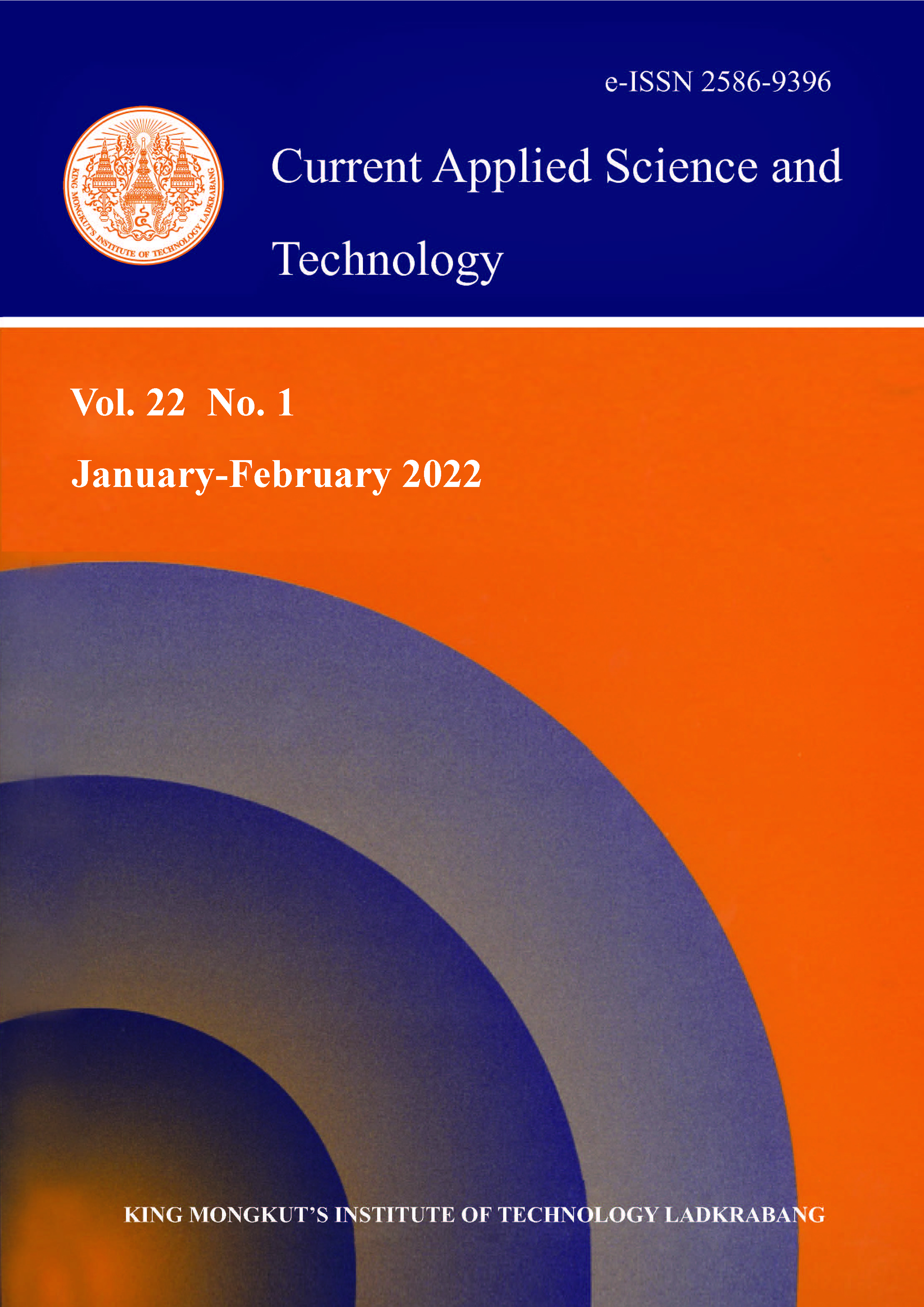Establishment of In Vitro Cell Suspension Culture, Kinetics of Cell Growth, pH, Nutrient Uptake and Production of 2-hydroxy-4-Methoxybenzaldehyde from the Germinated Root of Decalepis hamiltonii Wight & Arn. -An Endangered Plant
Main Article Content
Abstract
Decalepis hamiltonii Wight & Arn. belongs to Asclepiadaceae family which is an ethno-pharmaceutically important monogenic plant species that is native to the Deccan peninsula forest areas of India. It is endangered due to habitat loss and over exploitation for volatile 2-hydroxy-4-methoxybenzaldehyde (HMB), which is an aromatic bioactive secondary metabolite. HMB is of great biological significance and is present in the plant’s tuberous roots. Plant cell culture is a viable alternative method for in vivo plant cultivation for secondary metabolites production. Callus induction with high biomass from the germinated root as explants for HMB production was optimised on Murashige and Skoog’s (MS) medium containing 3% (w/v) sucrose, supplemented with 1 μM 2,4-dichlorophenoxyacetic acid (2,4-D), 1 μM α- naphthaleneacetic acid (NAA) and 10 μM 6-benzylaminopurine (BAP) in dark incubation. Cell suspension cultures were established in 250 ml shake flasks, and each flask contained 50 ml of the same induction medium. Moreover, the pH 5.8, 3% sugar concentration and 120 rpm agitation speed in dark condition were suitable for high biomass production and the specific growth rate (µ) was 0.086 /day. Extraction of HMB was done by steam condensate methods from the biomass of cell suspension culture. Qualitative and quantification analyses of HMB were performed with gas chromatography (GC) and observed that 0.92 ± 0.02 mg/ml (0.092%) HMB were synthesized in the cell suspension culture.
Keywords: Decalepis hamiltonii; secondary metabolite; 2-hydroxy-4-methoxybenzaldehyde; steam condensate; gas chromatography
*Corresponding author: Tel.: +91-9177160950
E-mail: vijay@rguktn.ac.in
Article Details
Copyright Transfer Statement
The copyright of this article is transferred to Current Applied Science and Technology journal with effect if and when the article is accepted for publication. The copyright transfer covers the exclusive right to reproduce and distribute the article, including reprints, translations, photographic reproductions, electronic form (offline, online) or any other reproductions of similar nature.
The author warrants that this contribution is original and that he/she has full power to make this grant. The author signs for and accepts responsibility for releasing this material on behalf of any and all co-authors.
Here is the link for download: Copyright transfer form.pdf
References
Ved, D., Saha, D., Ravikumar, K. and Haridasan, K., 2015. Decalepis hamiltonii Wight & Arn. The IUCN Red List of Threatened Species 2015. [online] Available at: http://dx.doi.org/10.2305/IUCN.UK.2015-2.RLTS.T50126587A50131330.en.
Reddy, M.C. and Murthy, K.S.R., 2013. A review on Decalepis hamiltonii Wight & Arn. Journal of Medicinal Plants Research, 7(41), 3014-3029.
Giridhar, P., Rajasekaran, T. and Ravishankar, G.A., 2005. Improvement of growth and root specific flavour compound 2-hydroxy-4-methoxy benzaldehyde of micropropagated plants of Decalepis hamiltonii Wight & Arn. under triacontanol treatment. Scientia Horticulturae, 106, 228- 236.
Ved, D., Mudappa, A. and Shankar, D., 1998. Regulating export of endangered medicinal plant species: need for scientific rigour. Current Science, 75, 341-344.
Nino, J., Gallego, C.M., Correa, Y.M. and Mosquera, O.M., 2003. Production of scopolamine by normal root cultures of Brugmansia candida. Plant Cell, Tissue and Organ Culture, 74, 289-291.
Hussain, M.S., Fareed, S., Ansari, S., Rahman, M.A., Ahmad, I.Z. and Saeed, M., 2012. Current approaches toward production of secondary plant metabolites. Journal of Pharmacy and Bioallied Sciences, 4(1), 10-20.
Matam, P., Parvatam, G. and Shetty, N.P. 2017. Enhanced production of vanillin flavour metabolites by precursor feeding in cell suspension cultures of Decalepis hamiltonii Wight & Arn. in shake flask culture. 3 Biotechnology, 7, 376, https://doi.org/10.1007/s13205-017-1014-0.
Singh, M. and Chaturvedi, R., 2012. Evaluation of nutrient uptake and physical parameters on cell biomass growth and production of spilanthol in suspension cultures of Spilanthes acmella Murr. Bioprocess and Biosystems Engineering, 35(6), 943-951.
Murashige, T. and Skoog, F., 1962. A revised medium for rapid growth and bio-assays with tobacco tissue cultures. Physiologia Plantarum, 15, 473-497.
Saini, R.K. and Giridhar, P., 2012. Effect of temperature, chemical treatment, hydration and plant growth regulators on germination of seeds and immature zygotic embryo of swallow root (Decalepis hamiltonii). Research Journal of Agricultural Sciences, 3, 40-44.
Srivastava, P., Sisodia, V. and Chaturvedi, R., 2011. Effect of culture conditions on synthesis of triterpenoids in suspension cultures of Lantana camara L. Bioprocess and Biosystems Engineering, 34, 75-80.
Heinonen, J.K. and Lahti, R.J., 1981. A new and convenient colorimetric determination of inorganic orthophosphate and its application to the assay of inorganic pyrophosphatase. Analytical Biochemistry, 113, 313-317.
Goldman, E. and Jacobs, R., 1961. Determination of nitrates by ultraviolet absorption. Journal‐American Water Works Association, 53,187-191.
Giridhar, P., Rajasekaran, T. and Ravishankar, G., 2005. Production of a root‐specific flavour compound, 2‐hydroxy‐4‐methoxy benzaldehyde by normal root cultures of Decalepis hamiltonii Wight and Arn (Asclepiadaceae). Journal of the Science of Food and Agriculture, 85, 61-64.
Samydurai, P., Ramakrishnan, R. and Thangapandian, V., 2013. Agrobacterium rhizogenes mediated hairy root culture and genetic transformation of an endangered medicinal plant of Decalepis hamiltonii Wight & Arn. Journal of Microbiology, Biotechnology and Food Sciences, 3(3), 191-194.
Nigra, H.M., Alvarez, M.A. and Giulietti, A.M., 1990. Effect of carbon and nitrogen sources on growth and solasodine production in batch suspension cultures of Solanum eleagnifolium Cav. Plant Cell, Tissue and Organ Culture, 21, 55-60.
Giridhar, P., Rajasekaran, T., Nagarajan, S. and Ravishankar, G.A., 2004. Production of 2-hydroxy-4-methoxy benzaldehyde in roots of tissue culture raised and acclimatized plants of Decalepis hamiltonii Wight & Arn. an endangered shrub endemic to Southern India and evaluation of its performance vis-à-vis plants from natural habitat. Indian Journal of Experimental Biology, 42, 106-110.
Nagarajan, S.L., Rao, J.M. and Gurudatta, K.N., 2001. Chemical composition of the volatiles of Decalepis hamiltonii Wight &Arn. Flavour and Fragrance Journal, 16, 27-29.






